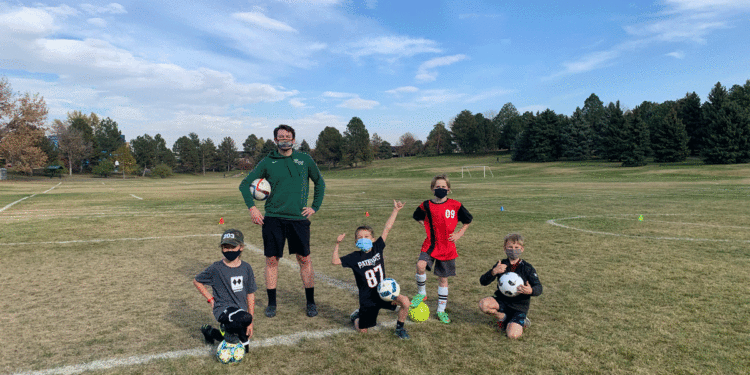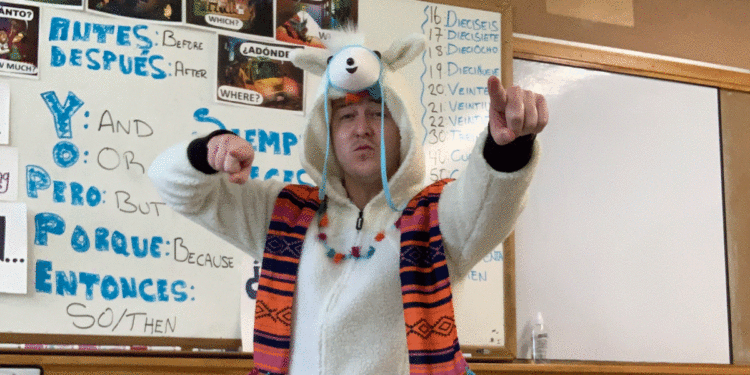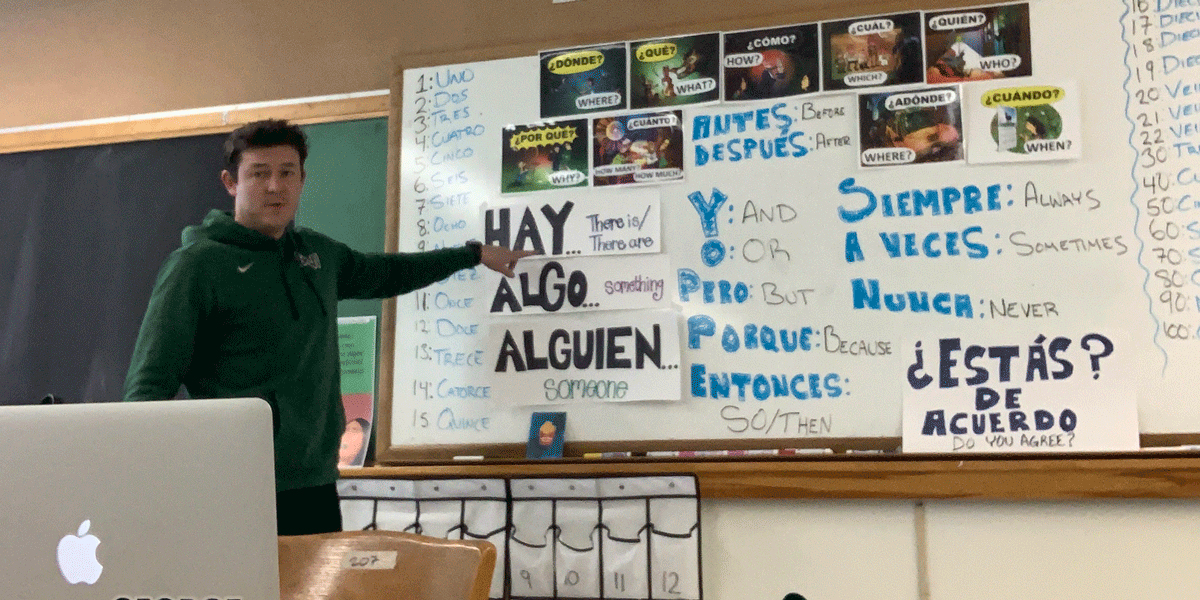Patrick Fry ’10 took his first Spanish class in Third Grade at Colorado Academy. When he reached the Upper School, he was still at it.
“Mr. Colodny and Señor Roblero put their whole heart into teaching Spanish, and their enthusiasm made the class so enjoyable,” Fry says, describing how he developed passion for the language. “That started to fuel the fire.”
By the time he got to college, it was locked in. He majored in Spanish and studied abroad in Buenos Aires. Today, he teaches Spanish at George Washington High School in Denver.
There was a lot of work and learning in the years between, but it all started at CA.

What happens to CA ‘lifers?’
Fry is what many in the CA community call “a lifer.” He attended CA from Kindergarten through Twelfth Grade.
He loved his experience and education at CA. He liked the small class sizes and close contact with teachers. He had good friends and was a standout player on the Varsity Soccer Team. He might have envisioned himself teaching at a school just like CA.
But after college, he got a job as a paraprofessional educator at Manual High School in Denver Public Schools (DPS), working with students with disabilities. The experience, he says, has been one of his life’s biggest accomplishments, and it inspired him to get his teacher’s license. He got a teaching position at DPS’s North High School and, later, his current role at George Washington.
“I love it so far,” he says of teaching in DPS. “I enjoy the student atmosphere at George. I feel passionate about working with a diverse population, learning from them, and helping them learn a thing or two, also.”
Fry tries to share his love of the Spanish language with his students, even those who may think they don’t need to learn the language.
“It’s fun to see their eyes light up when the language starts to click,” he says. “By the end of the year, they’re able to use the language, they feel confident, and they want to keep taking Spanish! It’s a powerful feeling, for them and me.”

Zooming through the semester
When asked what it’s like to teach high school in a pandemic, Fry admits: “It’s a challenge.”
He says at his school there was a week or so in August when anxiety was high among teachers. There was so much to prepare, so many tech tools to learn, so much to figure out.
“By week two of the official school year, we started to get into a rhythm,” says Fry, who is also assistant coach of the school’s Girls Varsity Soccer Team. “I was getting a better handle on the different tools, resources, and programs.”
Live virtual teaching can be tricky. Without face-to-face interaction, classroom engagement takes extra work for the teacher. Fry says it can be exhausting to stare at a screen all day. And for equity reasons, his students aren’t required to have their cameras on during virtual class meetings, adding another layer of complexity for teachers trying to maximize participation.
But there are moments when all the cameras are on, the teacher is teaching, and the students are learning.
“It can brighten your day really quickly,” he says. “We’re making it work.”
How teaching should be done
Now that he’s a teacher himself, Fry often looks back at his own education and thinks about his teachers at CA.
“CA teachers are really great with building strong connections with students,” he says. “I still remember the conversations I would have with my teachers and the positivity and energy they would bring.”
He appreciates the Upper School Advisory program, through which he had the same advisor from Freshman to Senior year. Fry knew that, in addition to providing academic guidance, his advisor was committed to helping him stay healthy—physically, mentally, and emotionally.
“As a student at CA, I always knew I could go to my teachers if I had issues, and that’s always in my mind now when I’m teaching,” he says. “That’s how it should be done.”
